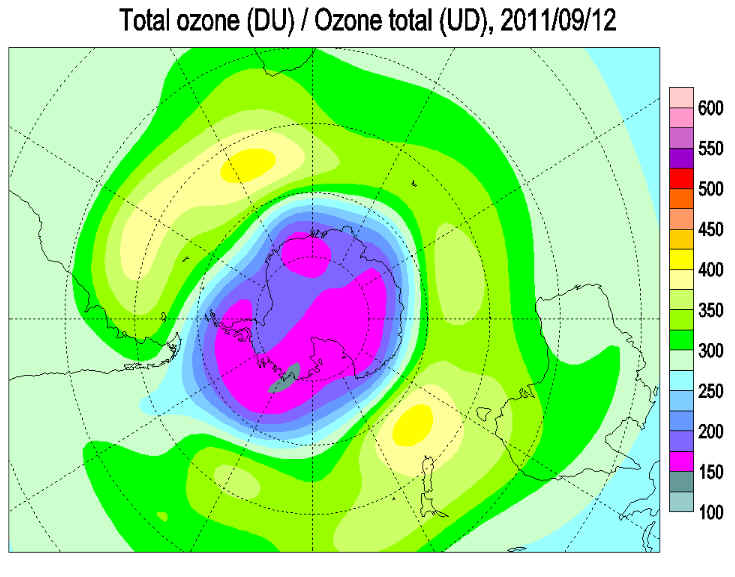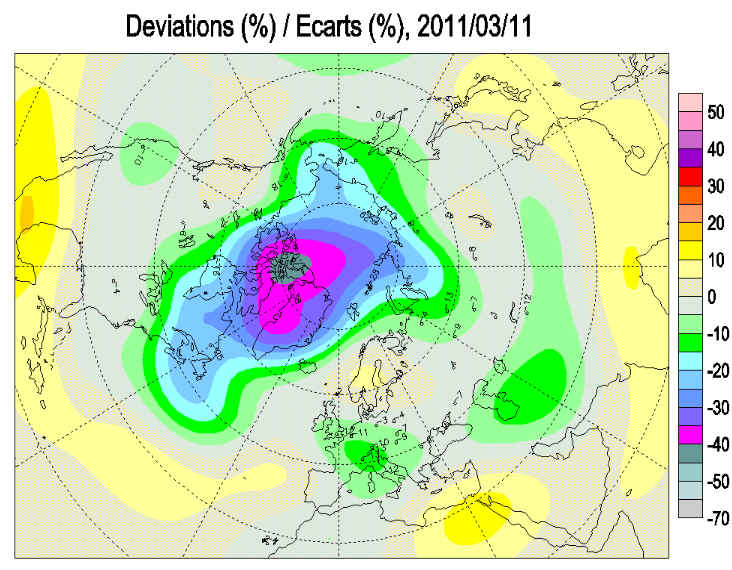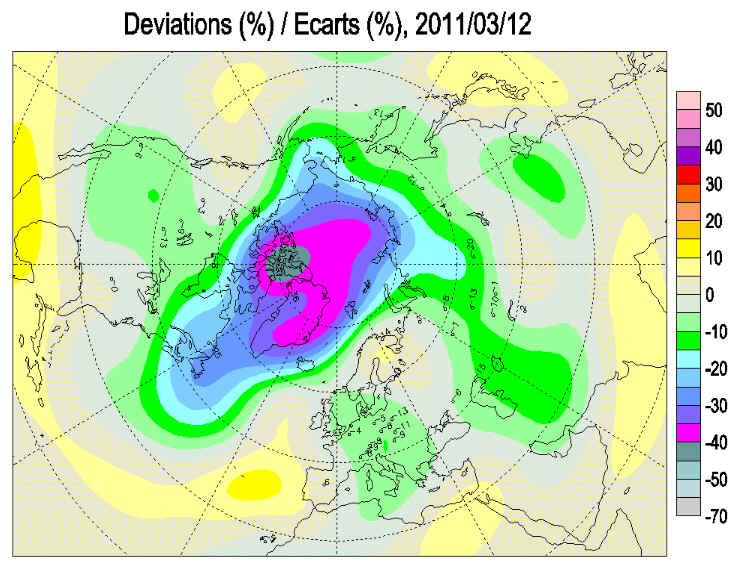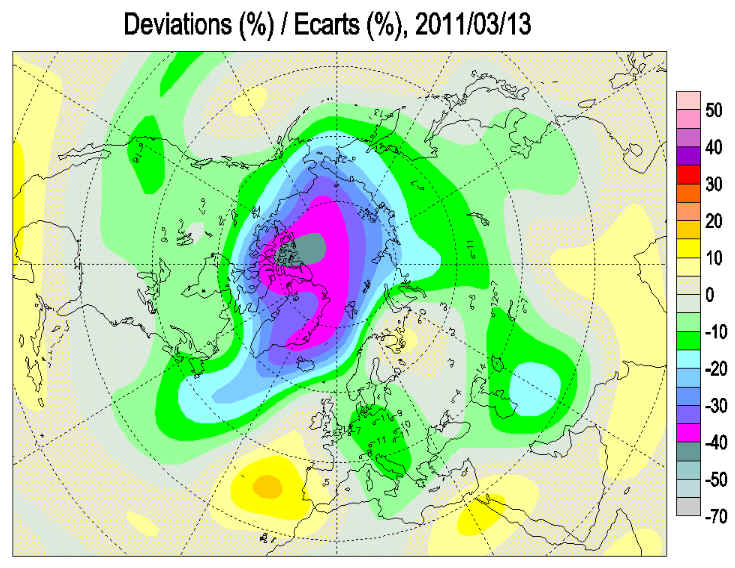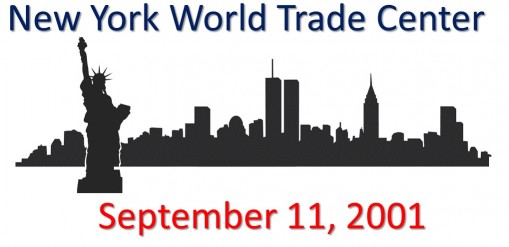|
2011 the Year of Two Ozone Holes December 27, 2011 Pocono Pines, PA-The 2011 Antarctic Ozone Hole is now over. The Ozone Hole began to form in mid August, and by mid September reached it's largest size of 26 million square kilometers on September 12,2011 larger than the average for the last decade and remained near this size into early October according to data from The British Antarctic Survey and NASA. The lowest concentration of ozone in the southern stratosphere—that is, the deepest “hole”—occurred on October 8, 2011 when levels descended to 95 Dobson units. Its size from October to mid November was near to or above the record area for the time of year. The hole became more elliptical in mid October and the edge of the ozone hole passed over the tip of South America and the Falkland Islands, but then returned to a more circular form. The 2011 Ozone Hole reached it's largest size of 26 million square kilometers on September 12,2011
The lowest concentration of ozone in the southern stratosphere—that is, the deepest “hole”—occurred on October 8, 2011 when levels descended to 95 Dobson units
In March of 2011 unusually low temperatures in the Arctic ozone layer initiated massive ozone depletion. The 2011 Arctic Ozone Hole occurred over an area considerably smaller than that of the Antarctic Ozone Holes. This is because the Arctic polar vortex, a persistent large-scale cyclone within which the ozone loss takes place, was about 40 percent smaller than a typical Antarctic vortex. While smaller and shorter-lived than its Antarctic counterpart, the Arctic polar vortex is more mobile, often moving over densely populated northern regions. Decreases in overhead ozone lead to increases in surface ultraviolet radiation, which are known to have adverse effects on humans and other life forms.
An Arctic Ozone Hole, if similar in size to the Antarctic Ozone Hole, could expose over 700+ million people, wildlife and plants to dangerous UV ray levels, which can cause skin cancer and disrupt reproduction of some animals and destroy plant life. The likely hood of this happening seems inevitable based on the deterioration of ozone layer caused by the effects of global warming on the upper atmosphere. The ozone layer is a concentration of ozone molecules in the stratosphere. About 90% of the planet's ozone is in the ozone layer. The layer of the Earth's atmosphere that surrounds us is called the troposphere. The stratosphere, the next higher layer, extends about 10-50 kilometers above the Earth's surface. Stratospheric ozone is a naturally-occurring gas that filters the sun's ultraviolet (UV) radiation. A diminished ozone layer allows more radiation to reach the Earth's surface. For people, overexposure to UV rays can lead to skin cancer, cataracts, and weakened immune systems. Increased UV can also lead to reduced crop yield and disruptions in the marine food chain. UV also has other harmful effects.
|

